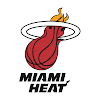AB Volvo is a world-leading Swedish manufacturer of commercial vehicles, trucks, buses and construction equipment, drive systems for marine and industrial applications, aerospace components and financial services. But it did start out as a car manufacturer, founded by Assar Gabrielsson and Gustaf Larsson. The main purpose of the company was to produce the safest cars possible, following the death of Assar's wife in a car crash. The automaker was founded April 14, 1927 in the city of Gothenburg, as a spin-off from roller ball bearing maker SKF (Svenska Kullagerfabriken AB).
The name Volvo was originally registered in May 1915 as a separate company within SKF AB and as a registered trademark with the intention to be used for a special series of ball bearing, but this idea was only used for a short period of time and SKF decided to use "SKF" as the trademark for all its bearing products. Volvo AB began to function on the 10th of August 1926 when the SKF Sales Manager Assar Gabrielsson and Engineer Gustav Larson, started production of 10 prototypes and set up the car-manufacturing business Volvo AB within SKF group. Volvo AB was introduced at the Stockholm stock exchange in 1935 and SKF then decided to sell its shares in the company.
1980 - 244 The first series produced Volvo automobile, called 'ÖV4' left the factory on 14 April 1927. Just 996 cars were produced between 1927-1929. 'ÖV4' was replaced by model PV651 in April 1929. Its success on the market helped Volvo buy out their engine manufacturer and thus become a serious car producer. By 1931, it was already returning its first dividend to shareholders.
After it reached a production milestone of 10,000 cars in May 1932, Volvo then targeted a new demographic segment, aiming to make their cars cheaper, a car “for the people”. This was going to be the PV 51 which came out in 1936 which was a smaller version of the PV36.
The PV444 was one of the most significant cars of the war era, the first true small car, a mixture of American flair and European size, it would become a resonant success and the best sold model throughout the 60s. The P1800 was Volvo's first sports car, made in the early 60s and it was so popular that it was featured in the hit TV series “The Saint” starring Roger Moore.
Safety and quality were still paramount for Volvo and that's why the 240 series which replaced the 140 had even more safety innovations in that department, like crumple zones, rear facing child seats and collapsible steering columns. Together with the smaller 340 models, they would make for most of the sales during the 70s and 80s for Volvo.
The 90s brought with them a totally new model, the 850, a front-wheel drive, executive car which won numerous awards for handling and safety features. By now, productions costs were mounting up and Volvo was one of the few independent producers out there, after a proposed deal with Renault fell through in 1993. This forced the company to seek new marketing strategies and that's how the sleeker S40 and V40 models were introduced in the factory's production line.
The new models brought a breath of fresh air, just like the C70 coupe and convertible, which are responsible for revitalizing the Volvo image while keeping in tune with the old tradition of safety and quality.
1990 - 460 The buyout of Volvo Cars was announced on January 28, 1998. Until then, Volvo Cars was owned by AB Volvo (the commercial vehicles group). In the following year acquisition for Volvo Cars by American car maker Ford Motor Co. was completed at a price of $6.45 billion USD. Volvo used the funds from the sale of the automobile division to finance the purchase of Scania, another leading Swedish truck manufacturer, but the deal was stopped for competition reasons by the European Union. Instead Volvo acquired the commercial vehicles division of French Renault and the American truck manufacturer Mack Trucks (which was owned by Renault at the time). As part of the arangement to buy Renault Trucks, the former parent company, Renault, bought in turn 20 percent in shares in AB Volvo. Among the reasons why Volvo took the initiative to sell the automobile manufacturing was the increasing development costs for new car models, coupled with the fact that it was a relatively small producer. The strategy was instead to grow as a truck manufacturer where it had a stronger market position.
Volvo Automotive's motto is "Volvo for life" attributed to the reliability and safety of their cars. Volvo means "I roll" in Latin. Combined with their company symbol, (commonly mistaken for the male symbol) which actually stands for iron ore and according to the company, represents "Rolling Strength".
Reference: www.autoevolution.com
Subscribe to:
Post Comments (Atom)















































0 comments:
Post a Comment